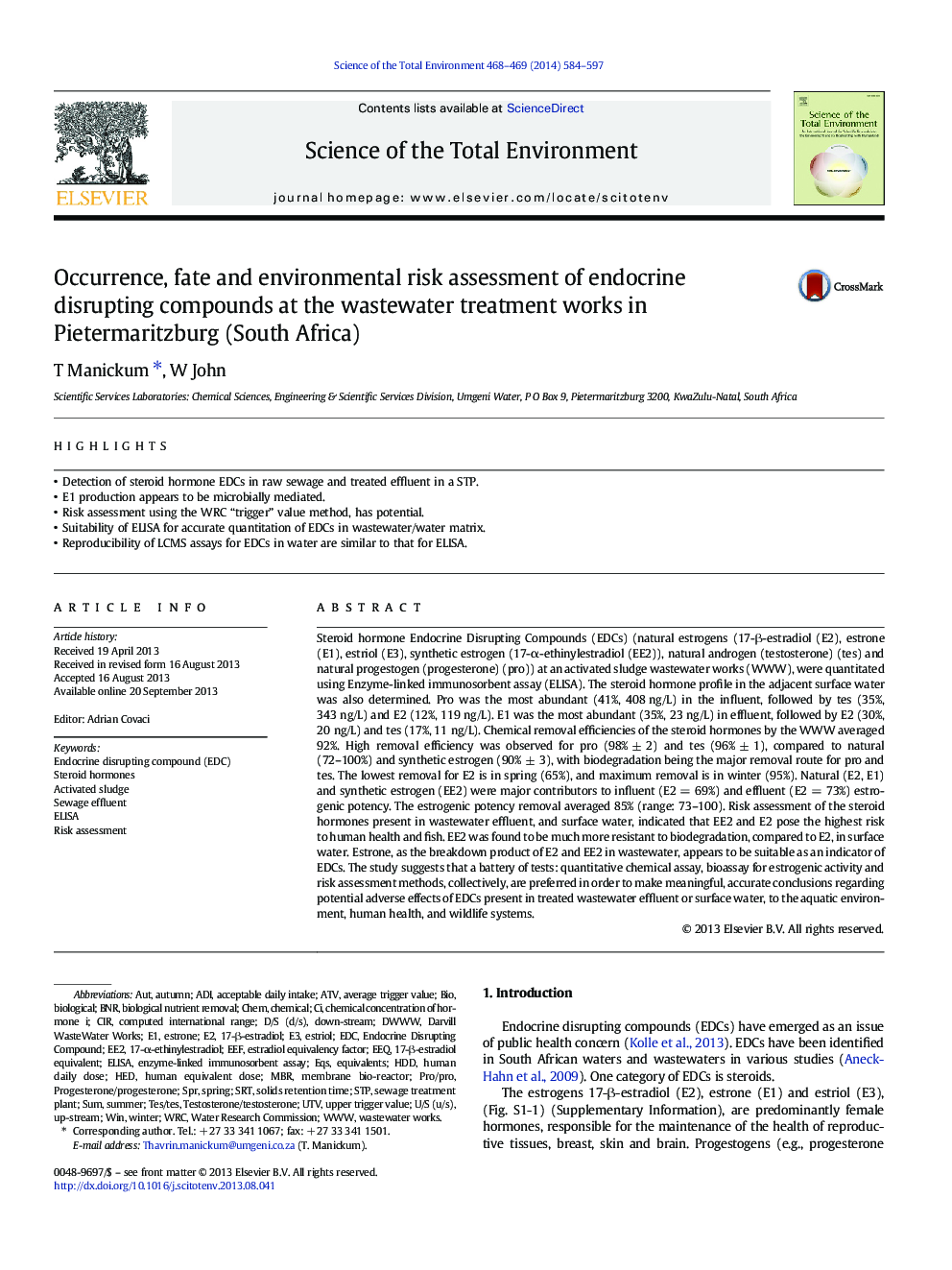| Article ID | Journal | Published Year | Pages | File Type |
|---|---|---|---|---|
| 6332568 | Science of The Total Environment | 2014 | 14 Pages |
Abstract
Steroid hormone Endocrine Disrupting Compounds (EDCs) (natural estrogens (17-β-estradiol (E2), estrone (E1), estriol (E3), synthetic estrogen (17-α-ethinylestradiol (EE2)), natural androgen (testosterone) (tes) and natural progestogen (progesterone) (pro)) at an activated sludge wastewater works (WWW), were quantitated using Enzyme-linked immunosorbent assay (ELISA). The steroid hormone profile in the adjacent surface water was also determined. Pro was the most abundant (41%, 408 ng/L) in the influent, followed by tes (35%, 343 ng/L) and E2 (12%, 119 ng/L). E1 was the most abundant (35%, 23 ng/L) in effluent, followed by E2 (30%, 20 ng/L) and tes (17%, 11 ng/L). Chemical removal efficiencies of the steroid hormones by the WWW averaged 92%. High removal efficiency was observed for pro (98% ± 2) and tes (96% ± 1), compared to natural (72-100%) and synthetic estrogen (90% ± 3), with biodegradation being the major removal route for pro and tes. The lowest removal for E2 is in spring (65%), and maximum removal is in winter (95%). Natural (E2, E1) and synthetic estrogen (EE2) were major contributors to influent (E2 = 69%) and effluent (E2 = 73%) estrogenic potency. The estrogenic potency removal averaged 85% (range: 73-100). Risk assessment of the steroid hormones present in wastewater effluent, and surface water, indicated that EE2 and E2 pose the highest risk to human health and fish. EE2 was found to be much more resistant to biodegradation, compared to E2, in surface water. Estrone, as the breakdown product of E2 and EE2 in wastewater, appears to be suitable as an indicator of EDCs. The study suggests that a battery of tests: quantitative chemical assay, bioassay for estrogenic activity and risk assessment methods, collectively, are preferred in order to make meaningful, accurate conclusions regarding potential adverse effects of EDCs present in treated wastewater effluent or surface water, to the aquatic environment, human health, and wildlife systems.
Keywords
WRCsRTHDDEQSWWWATVCIR17-α-ethinylestradiolEE2HEDeefEDCMBRCHEMEEQBNREndocrine disrupting compound (EDC)17-β-estradiolADISTPRisk assessmentEstroneestriolspringBIOMembrane bio-reactorBiologicalsummerendocrine disrupting compoundELISAEnzyme-linked immunosorbent assaySPRSewage treatment plantBiological nutrient removalAcceptable daily intakeHuman equivalent doseSolids retention timeWinterChemicalAutumnActivated sludgeSUMEquivalentsSteroid hormonesSewage effluentWINaut
Related Topics
Life Sciences
Environmental Science
Environmental Chemistry
Authors
T Manickum, W John,
